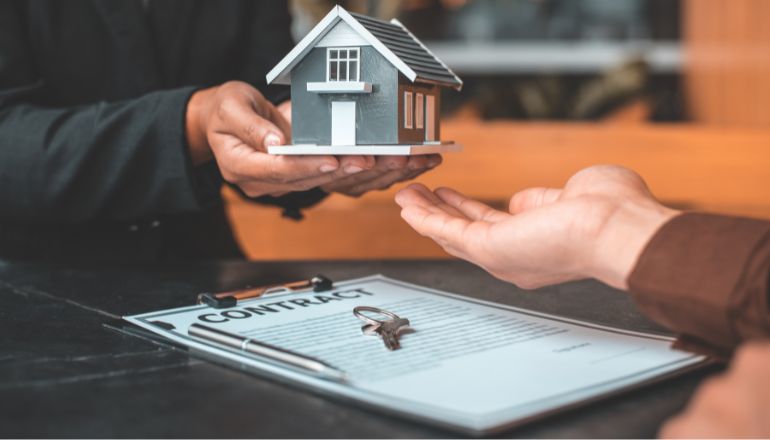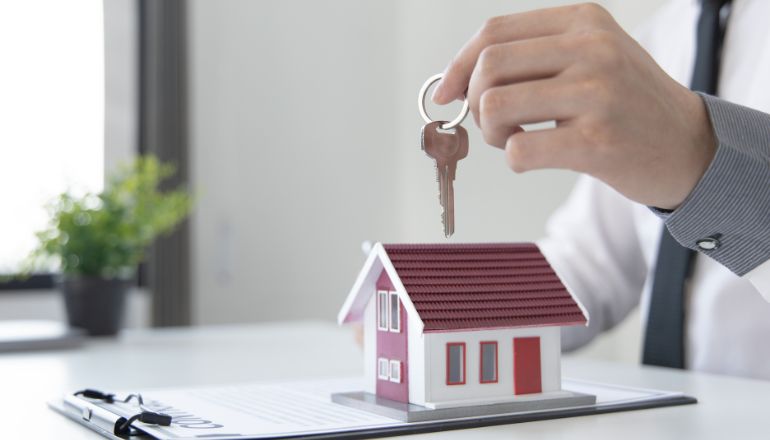A Step-by-Step Guide to Selling Your Home

Selling your home is more than just putting up a “For Sale” sign it’s a strategic process that requires careful planning to get the best price in the shortest time. Whether you’re a first-time seller or an experienced homeowner, knowing the steps to selling your home can make all the difference. From preparing your property to negotiating the final offer, this guide will walk you through every essential step to ensure a smooth and successful sale.
Preparing Your Home for Sale
Getting your home ready for the market is a crucial step in attracting buyers and maximizing its value. A well-prepared home not only sells faster but can also lead to better offers. Here’s how to make your property stand out:
Declutter and Clean Thoroughly
A clutter-free and spotless home makes a strong first impression. Buyers want to envision themselves in the space, and excessive personal items or mess can be distracting.
- Declutter: Remove unnecessary furniture, personal belongings, and anything that makes rooms feel crowded.
Organize Storage Spaces: Tidy up closets, cabinets, and storage areas, as buyers will look inside to assess available space.
Deep Clean Everything: Scrub floors, carpets, windows, walls, and appliances. Consider professional cleaning for a polished look.
Make Necessary Repairs and Upgrades
Minor repairs and strategic upgrades can make a home feel well-maintained and more appealing.
- Fix Visible Issues: Address leaky faucets, chipped paint, broken fixtures, squeaky doors, and any cosmetic damage.
- Upgrade Key Areas: A fresh coat of neutral paint, updated lighting, modern cabinet handles, and new faucets can make a big impact with minimal cost.
- Check Major Systems: Ensure HVAC, plumbing, and electrical systems are functioning properly, as buyers may request inspections.
Stage Your Home for Maximum Appeal
Staging helps highlight your home’s best features and allows buyers to picture themselves living in it.
- Enhance Curb Appeal – Mow the lawn, plant flowers, paint the front door, and clean pathways to create a welcoming exterior.
- Rearrange Furniture – Arrange rooms to maximize space and natural light, making them look bigger and more inviting.
- Add Finishing Touches – Use neutral décor, fresh flowers, and soft lighting to create a warm and inviting atmosphere.
A well-prepared home increases buyer interest and improves your chances of a quick, successful sale.
Thinking about your next home after selling? Preconstruction Homes offer modern designs, customizable features, and the potential for significant value appreciation.
Setting the Right Price
Pricing your home correctly is one of the most critical steps to selling your home. Set the price too high, and you risk scaring away buyers; too low, and you might leave money on the table. A strategic pricing approach ensures your home attracts the right buyers and sells within a reasonable timeframe.
Understanding Market Trends
The real estate market constantly fluctuates, so analyzing current trends is essential.
- Compare Recent Sales: Look at similar homes (comparables or “comps”) that have sold in your area in the past few months.
- Assess Local Demand: A seller’s market (high demand, low inventory) allows for higher pricing, while a buyer’s market (low demand, high inventory) may require more competitive pricing.
- Consider Seasonality: Home sales tend to be stronger in spring and summer, which could influence your pricing strategy.
Working with a Real Estate Agent vs. FSBO
Deciding whether to hire a real estate agent or sell your home yourself (For Sale by Owner, or FSBO) can impact your pricing strategy and overall experience.
Hiring a Real Estate Agent:
- Provides professional pricing analysis based on market data.
- Handles marketing, negotiations, and legal paperwork.
- Typically charges a commission (usually 5-6% of the sale price).
Selling FSBO:
- Gives you full control over the sale process.
- Saves on agent commission fees but requires significant time and effort.
- May result in a longer selling process or a lower final price without professional guidance.
Setting the right price from the start is a crucial step in ensuring a smooth and profitable home sale. If you’re also considering whether to buy a new home, understanding the differences between Pre-construction vs. Resale Homes can help you make a smarter investment decision.
Marketing Your Home
Once your home is ready for buyers, the next step is getting the right people to see it. A strong marketing strategy can help you attract more interest and secure the best possible offer.
Professional Photography and Listings
High-quality visuals and a well-crafted listing make all the difference in getting potential buyers through the door.
- Hire a professional photographer to capture bright, inviting images of your home. Listings with high-quality photos get more views and generate more interest.
- Write a compelling description that highlights key features, such as recent upgrades, spacious layouts, or desirable neighborhood amenities.
- List your home on major real estate platforms and social media to maximize exposure. The more people see your home, the better your chances of finding the right buyer.
Hosting Open Houses and Showings
Getting buyers inside your home is a critical step in the process.
- Schedule open houses at peak times—weekends often work best. A well-timed open house can create excitement and even lead to multiple offers.
- Make your home feel welcoming by ensuring it’s clean, well-lit, and staged before each showing.
- Be flexible with private showings to accommodate serious buyers who may prefer one-on-one tours. The easier it is to see your home, the faster it can sell.
Marketing is just one piece of the puzzle in the steps to selling your home. If you’re considering all your options, you may also want to explore preconstruction homes. They offer modern designs, energy efficiency, and customizable features—making them a great choice for families planning for the future. Learn more here: Why Preconstruction Homes Are a Choice for Growing Families.
Negotiating Offers and Closing the Deal
Once you receive offers, the focus shifts to choosing the best one, handling legal paperwork, and finalizing the sale. A smooth negotiation and closing process can help you sell with confidence.
Evaluating and Accepting the Best Offer
Not all offers are created equal. While price is important, other factors matter too.
- Consider the buyer’s financial position. Cash offers or pre-approved buyers are less risky.
- Review contingencies carefully. Fewer conditions, like home sale contingencies, make for a smoother transaction.
- Negotiate terms if needed. You can counteroffer on price, closing costs, or move-in dates to create a deal that benefits both sides.
Handling the Paperwork and Legal Requirements
After accepting an offer, legal and financial steps come into play.
- Work with a real estate agent or attorney to ensure contracts are properly drafted and reviewed.
- Complete disclosure forms about your home’s condition to meet legal requirements.
- Prepare for the home inspection and appraisal, which may impact final negotiations.
Final Closing Steps
The last phase finalizes the transfer of ownership.
- Make any agreed-upon repairs before closing.
- Review the closing statement to verify all costs and payments.
- Sign the final documents and hand over the keys to the new owner.
With everything in place, your home sale is complete, allowing you to move forward with your next plans.
Conclusion: Selling Your Home with Confidence
Selling a home takes planning, but with the right preparation and strategy, you can attract buyers, negotiate a great deal, and close with confidence. Whether you’re moving into a new home or exploring investment opportunities, it’s worth considering all your options. Many sellers are now looking into preconstruction homes for their modern features, energy efficiency, and potential long-term value. If you’re curious about whether they’re a smart investment, learn more here: Are Preconstruction Homes a Good Investment?.














